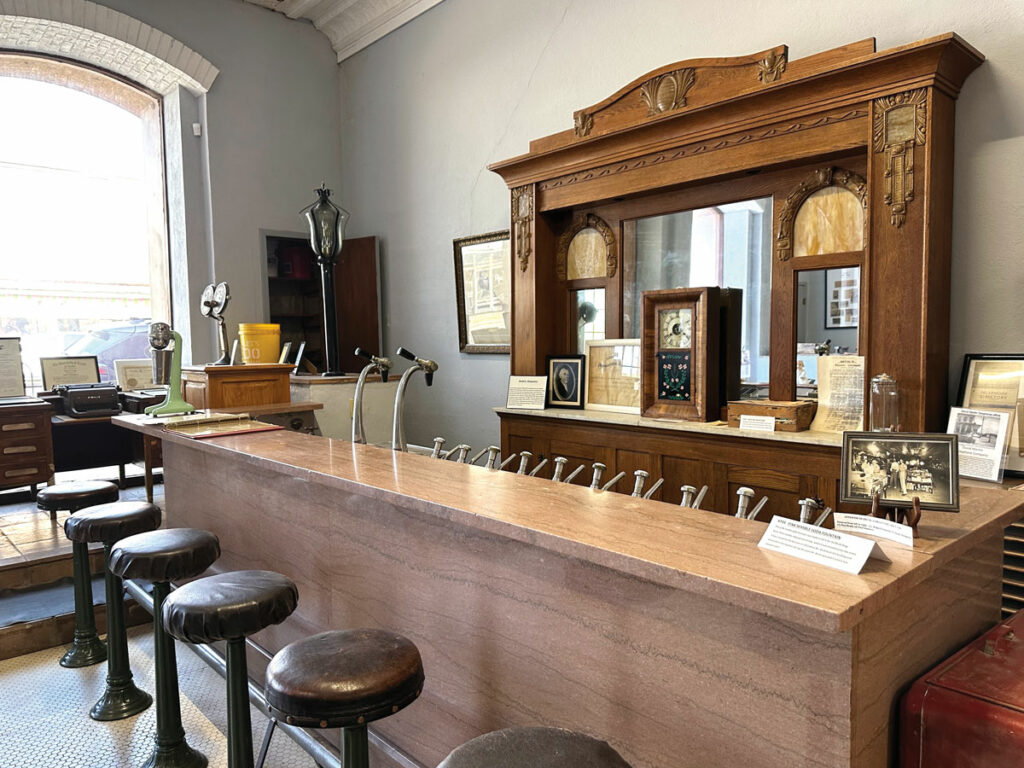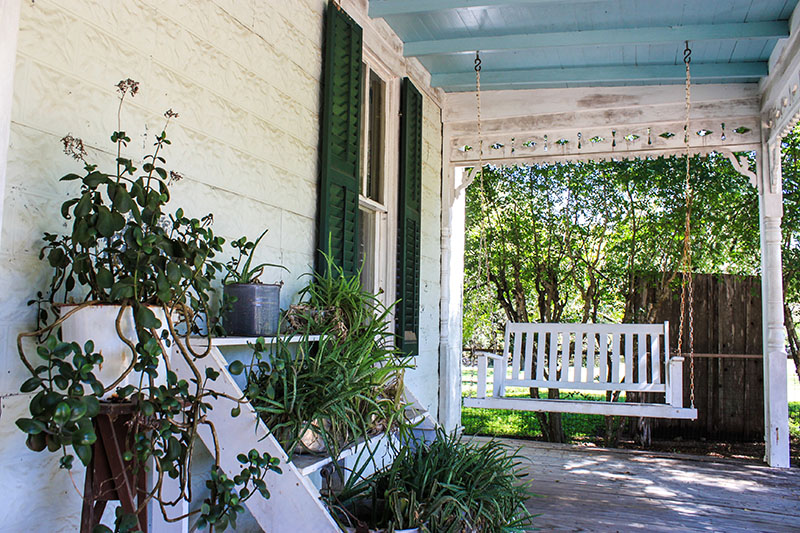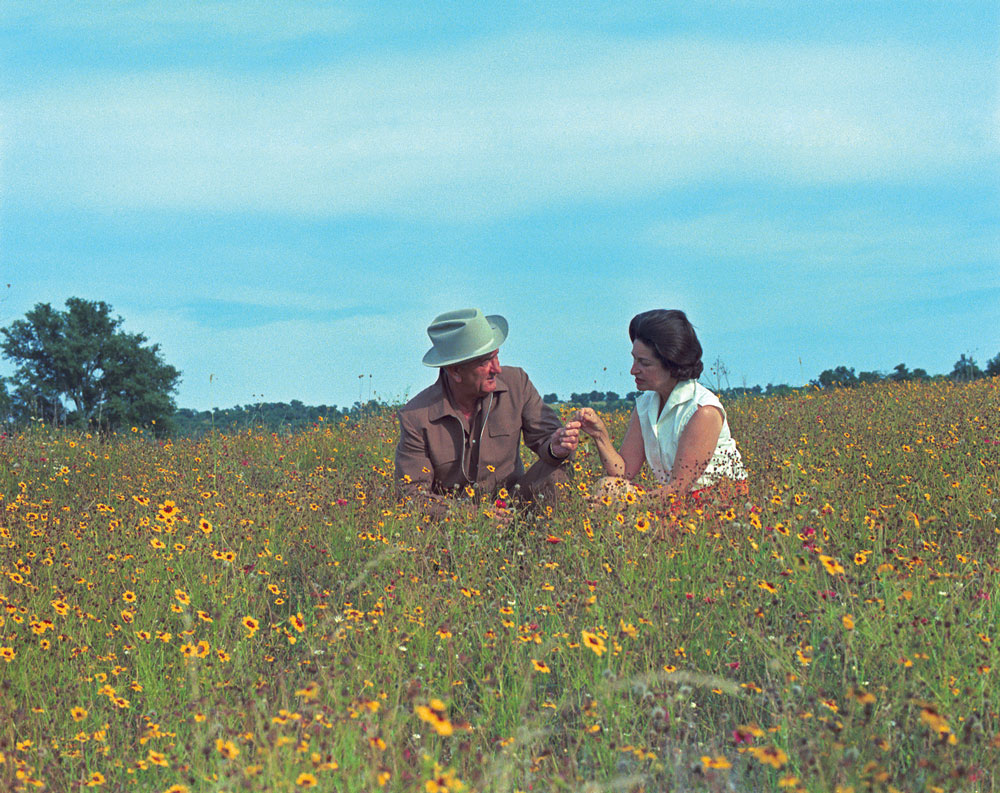
Fort Croghan Museum and Grounds in Burnet offers a glimpse into pioneer Burnet County with two original buildings. Staff photo by Dakota Morrissiey
To step onto the property of any of the three main history museums in the Highland Lakes is to step onto the biggest and perhaps most significant artifacts they have on display.
The Falls on the Colorado Museum in Marble Falls resides in a 132-year-old granite school building that began as a university in 1891. The Marble Falls Independent School District took it over in 1908, and one of its four elementary campuses surrounds it. The two-story building housed classrooms until 1987 and MFISD administration offices until 2009. It has been home to the museum since 2010.
Fort Croghan Museum and Grounds sits on the actual site of the fort, which was established in 1849 as one of four U.S. military outposts on the western frontier. Most of the historic buildings now on the property were moved to the site, but two are original to the location, including the cabin of the adjutant of the 2nd Dragoons of the 8th Infantry U.S. (mounted).
The Llano County Historical Museum is in what was once Bruhl’s Drugstore. The museum maintains the original soda fountain, complete with leather stools and a marble bar. The 123-year-old building overlooks the Llano River and the Roy Inks Bridge linking the northern half of the city of Llano to the south. It was given to the Llano County Historical Society, which operates the museum, by the A.H. Bruhl family in 1965.
Each of the museums presents a unique and hyperlocal take on how Texas was shaped from its origins as part of Mexico through its independence as a nation and, finally, as the 28th state in the Union. Their very presence tells a story, but wait until you step inside.
THE FALLS ON THE COLORADO MUSEUM

In Marble Falls, the tour of local history begins at the front door with a life-size replica of the inner workings of a corn and flour mill built by Lymon Wight and 20 Mormon families who settled near Marble Falls in 1851. Wight’s group broke away from The Church of Jesus Christ of Latter-day Saints when founder Joseph Smith died and Brigham Young took over. Those settlers eventually moved on from Marble Falls but left behind a Mormon cemetery, now on private land but still visited by descendants.
A few more steps inside and you’ll find the answer to the question most asked by museum visitors: Why is the town named Marble Falls? A panoramic photo of the original falls shows the power that enticed Confederate Gen. Adam R. Johnson to build a mill along the banks of the Colorado River. Blinded in battle in the Civil War, Johnson laid out city streets on a grid of letters and numbers and actively lobbied to bring the railroad to town in exchange for granite to build the Texas Capitol.
Farther down the main hall, the Granite Mountain exhibit features a ball and chain used to secure the convict labor shipped in to mine the Capitol’s building materials. The site remains an active quarry within the city limits.
But back to the city’s name: The rocks now under Lake Marble Falls are not marble at all; they just looked like it when wet.
Other highlights include a replica kitchen and bedroom from the late 19th and early 20th centuries, the town room documenting historic leaders and businesses in the city’s pre- and post-world war years, and the education room with its tribute to Marble Falls students and space for traveling exhibits.
Dresses worn by Mayor Ophelia “Birdie” Harwood, who was elected at a time when women did not have the right to vote, are also on display, including the black dress she wore in an iconic photo of her astride a horse on Main Street. That picture is there as well.
An entire room is dedicated to the 700-year-old bones of a bison uncovered by an amateur fossil hunter on the banks of South Rocky Creek in northeast Burnet County, along with Native American artifacts.
A book-filled room is the perfect place to dig through the museum’s extensive archives. You can take a piece of history home with you by purchasing a book from its collection. Some were written by local historians especially in the know.
The Falls on the Colorado Museum at 2001 Broadway in Marble Falls is open from 10 a.m.-2 p.m. Monday-Saturday. Admission is free; donations are appreciated. For more information, visit fallsmuseum.org, email focmuseum@gmail.com, or call 830-798-2157.
FORT CROGHAN MUSEUM AND GROUNDS

Gravel pathways lead through a wooded area filled with cabins, farm implements, and wildlife. Through each cabin door, visitors peer into Burnet County’s pioneer past from the mid-1850s.
The buildings include two original to the site: the adjutant’s office and a lookout that once sat atop Post Mountain at the edge of the 38-acre property.
Other cabins, which are all furnished and equipped as they would have been when originally occupied, include the Logan Vandeveer cabin that once stood where the town’s Dairy Queen on U.S. 281 is now, an old schoolhouse, a stage-coach stop converted into a post office, and a working blacksmith shop. All were disassembled and rebuilt on the Fort Croghan grounds.
The blacksmith shop and a covered work area come alive with re-enactors twice a year: the second weekend of October for Fort Croghan Day and the second Saturday of December for Christmas at Old Fort Croghan.
Dressed in period costumes, volunteers weave baskets, grind cornmeal, braid rope, sew quilts, churn butter, and hammer out horseshoes. They even wash clothes the pioneer way and hold lessons in the schoolroom.
Inside the museum, history moves back and forth and in between. While the grounds are mainly depictions of life when the area was first settled by non-natives, the air-conditioned museum contains exhibits on ancient times through the early 1900s.
The oldest items on display are original Native American head dresses and flint tools and weapons. The honor of next-oldest belongs to a shawl from the Battle of San Jacinto, where Texas won its independence from Mexico, and a cannonball from the Battle of Goliad, another key battle in the Texas Revolution.
The museum also has a World War I ambulance and the area’s first fire engine. Its growing collection keeps displays constantly changing as members of the Burnet County Heritage Society squeeze in donations in a meaningful, curated way.
Got a question about something you’ve spotted? Ask a docent! They are knowledgable and happy to help.
Fort Croghan Museum and Grounds at 703 Buchanan Drive (Texas 29) in Burnet is open from 10 a.m.-4 p.m. Thursday, Friday, and Saturday, April 6-Oct. 14, which is Fort Croghan Day. Christmas at Old Fort Croghan is Dec. 9 this year. Admission is free; donations are appreciated. For more information, visit fortcroghan.com, email info@fortcroghan.com, or call 512-756-8281.
LLANO COUNTY HISTORICAL MUSEUM

Whether you walk in the front door (which only has a few parking spots) or the back door (which has plenty of newly paved spaces), you step into the story of Llano County, from its covered wagon to its rock display.
The Llano County Historical Society has curated the museum’s impressive collection around the industries and interests that built the the area, beginning with the earliest white settlers in Castell and Bluffton. On the shores of the Llano River, Castell still thrives as a tourism destination, while Bluffton, with its once-busy salt mines, lies on the bottom of Lake Buchanan.
Minerals such as gold, iron, and gadolinite — a mineral sought by Thomas Edison for use in his early experiments with lightbulbs — brought in the people. Among the speculators was N.J. Badu, who built First National Bank, now the Badu House, in 1891. When mining didn’t work out, the area turned to ranching, agriculture, and the railroad, which initially laid tracks to haul iron. The rails were soon moving cattle instead.
A huge painting by local Western artist Jack Moss depicts the Battle of Packsaddle Mountain, the last known violent clash between white settlers and Native Americans in the area.
The fight took place on Aug. 5, 1873, and included several members of the Moss family, although not Jack’s family. Artist Moss organized a real-life re-enactment of the scene at the location with descendants of the Mosses who were early Llano County founders. They still live on ranchlands that have been in the family for more than a century.
In the lower-righthand corner of the battle painting, gun drawn, is an easily recognizable Jerry Don Moss, who is the current commissioner for Llano County’s Precinct 4, which includes the city of Llano and the museum. The chaps he is wearing belong to a member of the Llano County Historical Society whose father worked as a ranch hand for the Moss family for more than 50 years. Those same chaps hang on an adjacent wall.
Sitting front and center of the main museum room is a 1919 Studebaker Wagon purchased from the sale proceeds of a bale of cotton. If you come in the front door, it’s the first and biggest thing you see, but you have to walk by a marble-topped soda fountain to get to it.
The fountain was part of Bruhl’s Drugstore, opened by German immigrant Louis Bruhl in 1900. The drugstore is now the museum’s home.
The Llano County Historical Museum at 310 Bessemer Ave. (Texas 16) in Llano is open from 10 a.m.-4 p.m. Wednesday-Saturday and at other times by appointment. Admission is $5 for adults and $3 for students and seniors. Ages 5 and younger and museum members get in free. For more information, visit llanomuseum.org or call 325-247-3026.
For more on the museums and history of the Highland Lakes, visit 101HighlandLakes.com/History.












